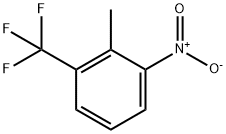2 5-Dichloro-3-nitropyridine(CAS# 21427-62-3)
| Risk Codes | R36/37/38 – Irritating to eyes, respiratory system and skin. R22 – Harmful if swallowed R43 – May cause sensitization by skin contact R41 – Risk of serious damage to eyes R37/38 – Irritating to respiratory system and skin. R25 – Toxic if swallowed |
| Safety Description | S36/37/39 – Wear suitable protective clothing, gloves and eye/face protection. S26 – In case of contact with eyes, rinse immediately with plenty of water and seek medical advice. S45 – In case of accident or if you feel unwell, seek medical advice immediately (show the label whenever possible.) |
| UN IDs | 2811 |
| WGK Germany | 1 |
| HS Code | 29333990 |
| Hazard Note | Harmful |
| Hazard Class | 6.1 |
| Packing Group | Ⅲ |
Introduction
2,5-Dichloro-3-nitropyridine is an organic compound. The following is an introduction to its properties, uses, manufacturing methods and safety information:
Quality:
- Appearance: 2,5-Dichloro-3-nitropyridine is a colorless to pale yellow crystal.
- Solubility: It is soluble in organic solvents such as ethanol, dimethyl ether and chloroform, but less soluble in water.
- Stability: The compound is stable at room temperature, but is explosive at high temperatures or in contact with strong oxidizing agents.
Use:
- Pesticides: It can be used as an insecticide and has a good control effect on some pests.
Method:
The synthesis method of 2,5-dichloro-3-nitropyridine usually includes nitrification reaction and chlorination reaction. Among them, the traditional synthesis method is to nitrate 2,5-dichloropyridine with nitric acid in the presence of sulfuric acid. Another method is to react 2-nitro-5-chloropyridine with acidic copper bromide to produce 2,5-dichloro-3-nitropyridine.
Safety Information:
- 2,5-Dichloro-3-nitropyridine is an organic compound that needs to be handled with care to prevent it from coming into contact with the skin, eyes, and respiratory system.
- Wear appropriate protective equipment, including protective eyewear, gloves, and face shields, when operating.
- During operation, avoid inhaling gases, mist or vapours and maintain good ventilation.
- In case of contact with skin or eyes, rinse immediately with plenty of water and consult a doctor.
- When storing, 2,5-dichloro-3-nitropyridine should be kept in a dry, cool, well-ventilated place, away from ignition and oxidants.








